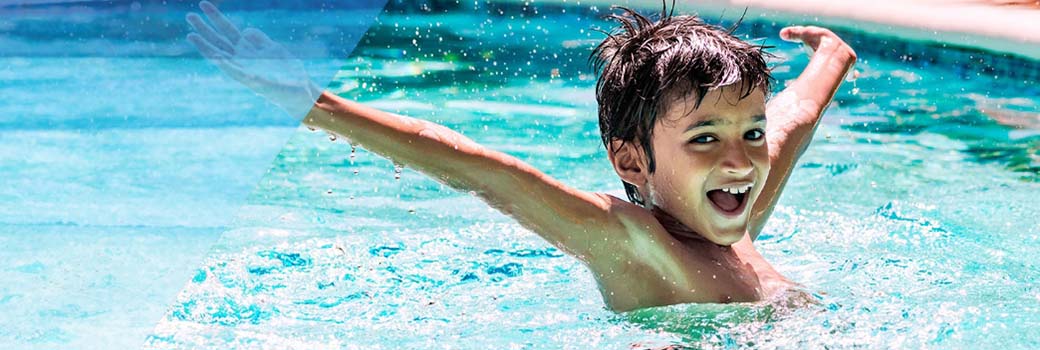Drowning is a leading cause of death for children.
In the United States:
- More children ages 1–4 die from drowning than any other cause of death.
- For children ages 5–14, drowning is the second leading cause of unintentional injury death after motor vehicle crashes.
While children are at highest risk, anyone can drown.
Every year in the United States there are an estimated:
- 4,000* fatal unintentional drownings—that is an average of 11 drowning deaths per day.
- 8,000† nonfatal drownings—that is an average of 22 nonfatal drownings per day.
Nonfatal drowning can result in long-term health problems and costly hospital stays.
- For every child under age 18 who dies from drowning, another 7 receive emergency department care for nonfatal drowning.
- Nearly 40% of drownings treated in emergency departments require hospitalization or transfer for further care (compared with 10% for all unintentional injuries).
- Drowning injuries can cause brain damage and other serious outcomes, including long-term disability.
What is drowning?
Drowning is the process of experiencing respiratory impairment from submersion or immersion in liquid. Drowning is not always fatal.
Fatal drowning happens when the drowning results in death.
Nonfatal drowning happens when a person survives a drowning incident. Nonfatal drowning has a range of outcomes, from no injuries to very serious injuries such as brain damage or permanent disability.
Some people have a higher risk of drowning.
Children
Children ages 1–4 have the highest drowning rates. Most drownings in children 1–4 happen in swimming pools. Drowning can happen even when children are not expected to be near water, such as when they gain unsupervised access to pools. Fatal drowning is the leading cause of death for children 1-4 and the second leading cause of unintentional injury death for children 5-14, behind motor vehicle crashes.
Males
Nearly 80% of people who die from drowning are male. Many factors might contribute to higher rates of drowning among males, including increased exposure to water, risk-taking behaviors, and alcohol use.
Some racial and ethnic groups
Drowning death rates for American Indian or Alaska Native people ages 29 and younger are 2 times higher than the rates for White people, with the highest disparities among those ages 25-29 (rates 3.5 times higher). Drowning death rates for Black people are 1.5 times higher than the rates for White people. Disparities are highest among Black children ages 5-9 (rates 2.6 times higher) and ages 10-14 (rates 3.6 times higher).
In swimming pools, Black children ages 10-14 years drown at rates 7.6 times higher than White children. Black children and youth are more likely to drown in public pools, and white children and youth are more likely to drown in residential pools. In natural water, American Indian or Alaska Native people have the highest drowning death rates, with rates 2.7 times higher than White people.
People with seizure disorders or certain medical conditions
People with seizure disorders such as epilepsy are at a higher risk of fatal and nonfatal drowning than the general population. Drowning is the most common cause of unintentional injury death, with the bathtub being the most common site of drowning, for people with seizure disorders. Other conditions such as autism and heart conditions are associated with a higher risk of drowning.
Certain factors make drowning more likely.
Not being able to swim
Many adults and children report that they can’t swim or that they are weak swimmers. Participation in formal swimming lessons can reduce the risk of drowning among children and young adults.
Missing or ineffective fences around water
Proper pool fencing can prevent young children from gaining access to the pool area without caregivers’ awareness. A four-sided isolation fence which separates the pool area from the house and yard reduces a child’s risk of drowning by 83% compared to three-sided property-line fencing (which encloses the entire yard, but does not separate the pool from the house).
Lack of close supervision
Drowning can happen quickly and quietly anywhere there is water, especially to unsupervised children. It happens in lakes and oceans, pools, bathtubs, and even buckets of water.
Location
The highest risk locations for drowning vary by age. Among infants under 1 year old, two thirds of all drownings occur in bathtubs. Most drownings happen in home swimming pools among children ages 1–4. About 40% of drownings among children 5-14 occur in natural water, and about 30% occur in swimming pools. More than half of fatal and nonfatal drownings among people 15 years and older occur in natural waters like lakes, rivers, or oceans.
Not wearing life jackets
Life jackets can prevent drowning during water activities, especially boating and swimming. The U.S. Coast Guard reported 658 boating-related deaths in 2021—81% died by drowning, and 83% of these people were not wearing life jackets.
Drinking Alcohol
Among adolescents and adults, alcohol use is involved in:
- up to 70% of deaths associated with water recreation, like boating or swimming,
- nearly 1 in 4 emergency department visits for drowning, and
- about 1 in 5 reported boating deaths.
Alcohol impairs balance, coordination, and judgment, and it increases risk-taking behavior.
Using drugs and prescription medications
Certain medications can increase the risk of drowning, especially psychotropic medications commonly prescribed for depression, anxiety, bipolar disorder, schizophrenia, and other conditions. Side effects from these medications can be similar to the effects of alcohol, such as a difficulty thinking clearly and decreased motor skills. Other drugs and prescription medications might also increase drowning risk.
*An average of 4,012 unintentional drowning deaths occurred each year from 2011–2020.
† An average 8,061 estimated emergency department visits due to non-fatal drowning occurred each year from 2011–2020.



